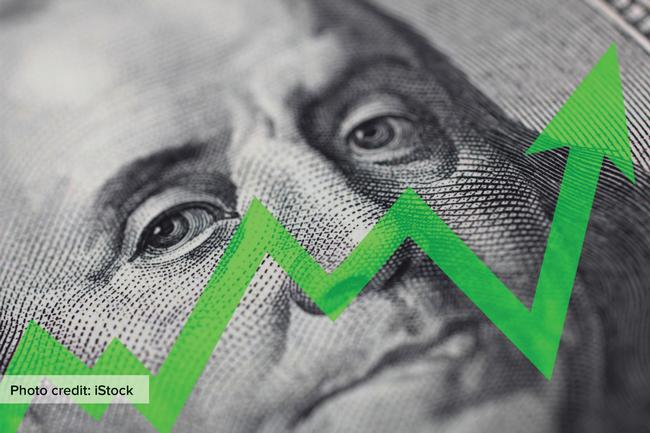If energy price spikes and supply chain disruptions continue, inflation expected to persist
In January 2022, inflation reached its highest yearly increase at 7.5% in nearly 40 years. But are these high rates here to stay, or are they only a temporary symptom of COVID-19 and the recent supply chain-related disruptions?
Economists from UC Davis, Bar-Ilan University, and the London School of Economics analyzed financial markets that trade in the risk of inflation to show how expectations of long-term inflation have changed over the last year. They found that between November 2020 and November 2021, there was over a tenfold increase in the probability of average inflation lying above 3% over the next five years, suggesting that many expect inflation to persist.
Inflation, as measured by the Consumer Price Index (CPI), has risen dramatically over the last year. Gas prices hit a new all-time high in November 2021, with inflation for food at home, electricity, and new vehicles at 6.5%, 6.3%, and 11.8%, respectively, in December. Rising oil and natural gas prices, higher personal savings and increased consumer demand coming out of the lockdown, and a sluggish supply chain coming out of the pandemic may all be partially to blame for inflation over the last year.
As pent-up demand slows and supply chains adapt, their impact on inflation may also subside. But, if the energy price spike in response to the invasion of Ukraine persists and if supply disruptions continue, it could lead consumers to demand higher wages to increase their purchasing power.
“If companies raise prices in response to higher wage demands by workers, leading to further high expectations of inflation, further wage demands, and so on, then the United States could enter the wage-price spiral that is often at the heart of high and persistent inflation,” said Jens Hilscher, associate professor in the Department of Agricultural and Resource Economics at UC Davis.
To better understand the likelihood of long-term inflation, Hilscher and co-authors Alon Raviv, senior lecturer at Bar-Ilan University, and Ricardo Reis, A.W. Phillips Professor of Economics at the London School of Economics, looked to the financial markets that trade in contracts that pay off if inflation rises above a given cutoff (with one cutoff at 3% and another at 4% — both well above the Federal Reserve's target of 2% inflation per year). Assessing the payoffs of these two types of contracts allowed them to determine the probability of the average inflation being above 3% or 4% over the next five years.
They found that between November 2020 and November 2021, the probability of an average inflation of 3% jumped from 6.1% to 66.2%, while the probability of an average inflation of 4% rose from 1.6% to 14.1%, a dramatic increase.
Long-term inflation leads to higher uncertainty, making long-term planning harder for businesses and individuals alike. It also leads to lenders experiencing a loss in the real value of the money they are repaid. Over time, these factors lead lenders to charge higher interest rates to account for uncertainty and potential losses. In turn, access to credit will suffer.
Hilscher noted, “A central bank that is very committed to a stable inflation target can always bring inflation down, even if only by causing a recession. We will see over the next several months which risk the Fed perceives to be the greater threat to our economy.”
To learn more about the risk of long-term inflation, read the full article “Inflation Risks are on the Rise,” by Hilscher, Raviv and Reis published by UC Giannini Foundation of Agricultural Economics in ARE Update 25(3): 9–11, free online at https://giannini.ucop.edu/filer/file/1645718420/20317.
ARE Update is a bimonthly magazine published by the Giannini Foundation of Agricultural Economics to educate policymakers and agribusiness professionals about new research or analysis of important topics in agricultural and resource economics. Articles are written by Giannini Foundation members, including University of California faculty and Cooperative Extension specialists in agricultural and resource economics, and university graduate students. Learn more about the Giannini Foundation and its publications at https://giannini.ucop.edu.
